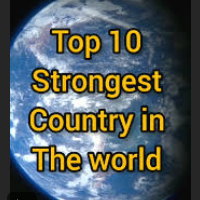5 largest oceans in the world
Oceans are responsible for the existence of life in our world. Life started in the ocean; today, more than 230,000 marine species call the sea their home. Oceans control the Earth’s climate and temperature. They balance heat and are crucial for the creation of rainfall.
Today, we list the top 5 largest oceans in the world and the evolution of 5 oceans on Earth.
5. Arctic Ocean
The Arctic Ocean is the world’s smallest and shallowest ocean of all 5 oceans. Further to this, it is the coldest and least salty ocean. In size, the Arctic Ocean is about the size of Russia. Because it’s located at the North Pole, the Arctic Ocean has polar ice. The Arctic Ocean is the most diverse in terms of fish species. It has a wide variety of marine species including whales, jellyfish, etc.
4. Southern Ocean
In 2000, the Southern Ocean is the newest ocean recognized by the International Hydrographic Organization. It borders Antarctica in its entirety. In terms of size, it’s the fourth-largest at 20,327,000 square kilometers. It extends out to 60 degrees South latitude. It’s an extreme environment and is the least understood of the 5 oceans. This is because it is unexplored, far from populated areas, and has a severe climate.
3. Indian Ocean
The Indian Ocean is the third largest ocean surrounding a densely populated region. It contains an additional 20% of the water on Earth’s surface. Since about 800 A.D. the Indian Ocean has played an important role in trading. For centuries, navigators have sailed along major ocean currents for shipment routes. It borders India in the North, East Africa, Australia, and the Southern Ocean. Because of the higher water temperature, it has limited marine life.
2. Atlantic Ocean
The Atlantic Ocean is situated between the Americas and European/African continents. The Atlantic Ocean is the second-largest and saltiest ocean in the world. The ocean bottom is composed of the mid-Atlantic Ridge. This submarine mountain range extends all the way from Iceland to 58 degrees South latitude. It’s part of the longest mountain range in the world. It resembles an S-shape between the Americas, Europe, and Africa. “Atlantic” originated from the Greek god “Atlas” who carried the sky for eternity.
1. Pacific Ocean
The Pacific Ocean is the largest ocean covering more than 30% of the Earth. This is close to half of the water on Earth. The equator divides the Pacific Ocean into two separate parts – the North Pacific Ocean and the South Pacific Ocean. It touches the west coast border of the Americas along with East Asia and Australia.
 Digital Bangla Everyday Latest News Updates…
Digital Bangla Everyday Latest News Updates…



